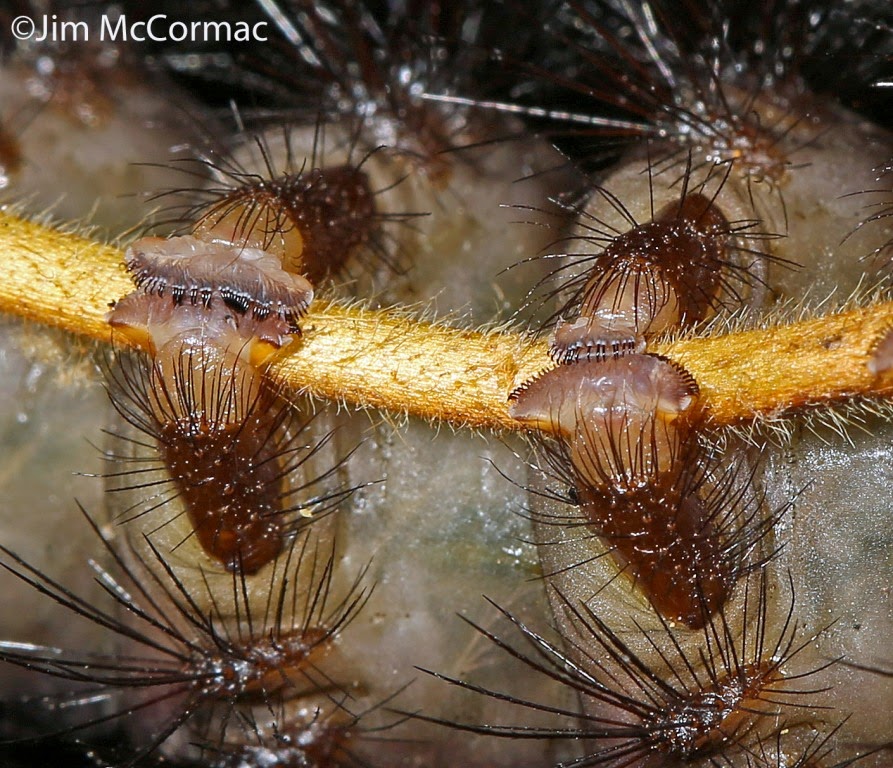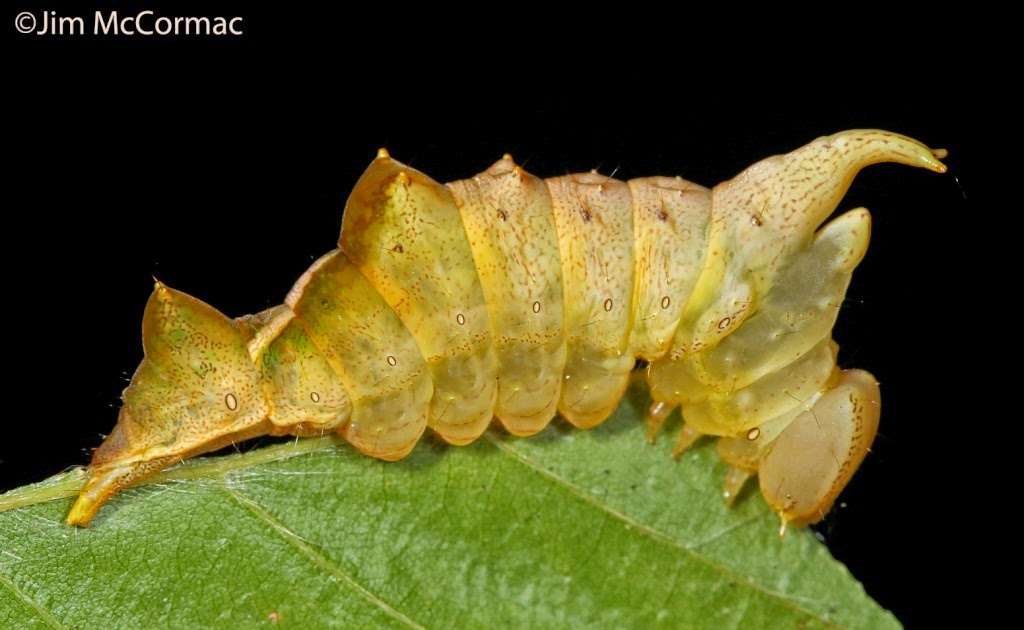Much cooler nights, shorter days, and foliage in a rapid state of senescence means the end of caterpillar season. It'll be a long cold winter with little or no prey for us caterpillar hunters. Following is a hodgepodge of caterpillars found in the last few weeks, mostly from Adams County, Ohio, but a few from elsewhere in the state. May they help tide you over during the sleet, snow, and blizzards to come.
Striking in its complexity is this very showy Honey Locust Moth caterpillar, Sphingicampa bicolor. John Howard has a prime honey locust tree on his property, and seems to find the cats on it every year. He was good enough to bring this specimen along on one of our field trips so that interested parties could photograph it. As is always the case, click on the photo to ENLARGE it.
These are two of the four anterior prolegs of the above caterpillar. They are like small suction cups tipped with little hooks called crochets, and the prolegs exert a very powerful grip on twigs or foliage.
Here is the anterior prolegs of a Giant Leopard Moth, Hypercompe scribonia.These crochets are quite well developed, and are clearly visible in the photo. It appears that the caterpillar interlaces the crochets of the opposing feet, thus creating a nearly unbreakable grasp on the twig or petiole.
The White-blotched Hetercampa, Heterocampa umbrata, is a strange beast indeed. When alarmed, it elevates its posterior, or at least this one did. Like many caterpillar species, it is dappled with paler areas that seemingly mimic dead or necrotic leaf tissue and help it blend with its surroundings. This is one of many oak specialist caterpillars, and our model was feeding on Black Oak, Quercus velutina.
If possible, this Red-washed Prominent, Oligocentria semirufescens, is stranger than the previous character. A stegosaurus comes to mind. While rather conspicuous in this pose, if the caterpillar has chewed its way into the margin of a leaf, it blends in incredibly well.
I was fortunate indeed to luck into this scene. It is a Black-waved Flannel Moth caterpillar, Megalopyge crispata, in the process of molting. Most caterpillars go through five molts - some species even more - and each stage is termed an instar. This flannel cat is just entering its ultimate instar, which is brown and shaggy. Prior to this stage, it was like a big puffball of white hair, as seen by the old skin on the right. Whatever stage they are in, don't touch! This caterpillar is armed with very painful stinging spines.
Handsome but rather unassuming is this Walnut Sphinx, Amorpha juglandis, seen here, appropriately, on a black walnut tree. When threatened, it puts on a heckuva show. Touch one and it will expel air through its spiracles (tiny openings for air exchange) with great force. The result is a quite audible and utterly unexpected hissing sound. That effect is coupled with violent side to side thrashing. It's enough to encourage many would-be predators to leave the caterpillar alone, I'd think.
This Hog Sphinx, Darapsa myron, did not have enough defensive ploys to successfully thwart braconid wasps, which have parastized it. The cylindric cottony capsule is a wasp cocoon, and all of the little brown spots mark the locations of cocoons that have fallen off. The wasp grubs ate their way to maturity inside the caterpillar host, then burst through the skin and formed these cocoons. In short order, they'll pop the tops off the cocoons and emerge as adult wasps. This caterpillar, while still alive, is unlikely to survive such ravages. The vast majority of caterpillars perish due to predators, but fortunately enough survive to complete the life cycle and repopulate our world with moths and butterflies.




